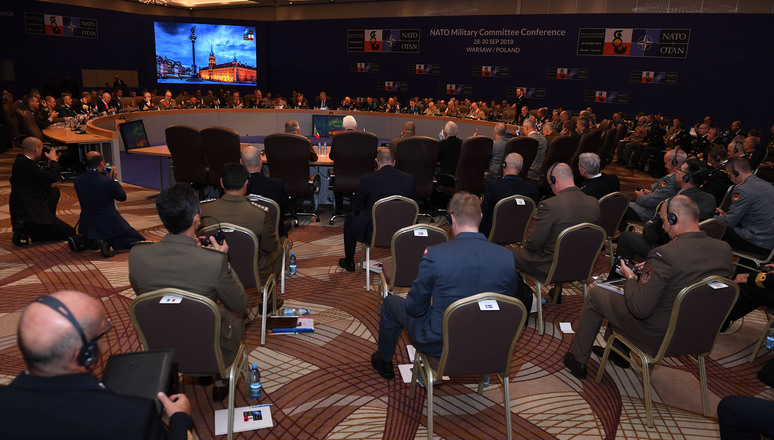NATO Military Committee met 28-30 September 2018 in Warsaw, Poland in Chiefs of Defence format. Discussions focused on Allied operations, missions and activities, the development of NATO’s Military Strategy, Responsiveness, Reinforcement and the NATO Readiness Initiative, as well as the Alliance’s ongoing modernisation during the opening of their final meeting of 2018, the Allied Chiefs of Defence paid tribute to serving military personnel and remembered the sacrifice of those men and women killed or wounded in the line of duty.

Over 20,000 military personnel are engaged in NATO operations, missions, and activities around the world managing complex ground, air and naval operations often in challenging environments.
The Chiefs of Defence received detailed intelligence and operational briefings noting the changes to the security environment and ongoing challenges. They went on to discuss the need for increased cooperation and coordination, especially in areas where a number of institutions are involved.
At the Brussels Summit in July 2018, the Heads of State and Government agreed the ‘Four Thirties’ Readiness Initiative with Allies committing to having 30 mechanised battalions, 30 air squadrons and 30 combat vessels, ready to use within 30 days or less by 2020. The Chiefs of Defence provided further advice and recommendations on the initiative and received progress reports on NATO-European Union cooperation in the area of military mobility.
As NATO modernises, it also continues to pursue a 360-degree approach to security and effectively fulfil all three core tasks as set out in the 2010 Strategic Concept: collective defence, crisis management, and cooperative security. The Chiefs of Defence reviewed the progress of the Command Structure Adaptation as well as the ongoing Functional Review, which aims to improve how the NATO Headquarters is governed.
“On the NATO Military Strategy, the Chiefs of Defence agreed the need to focus both on current means and capabilities, based on a broad and strengthened deterrence and defence, in order to contribute to projecting stability and strengthening security outsides its territory, thereby contributing to Alliance security overall.”
During his joint press conference with Chief of the Polish General Staff, Lieutenant General Rajmund Andrzejczak, the Chairman of the NATO Military Committee, Air Chief Marshal Sir Stuart Peach concluded by stating,
“For nearly 70 years, NATO has helped to preserve peace and stability in Europe. We continue to stand united in our core collective defense mission. That’s why NATO is the most successful – and the most valuable – Alliance in history”.
nato.int